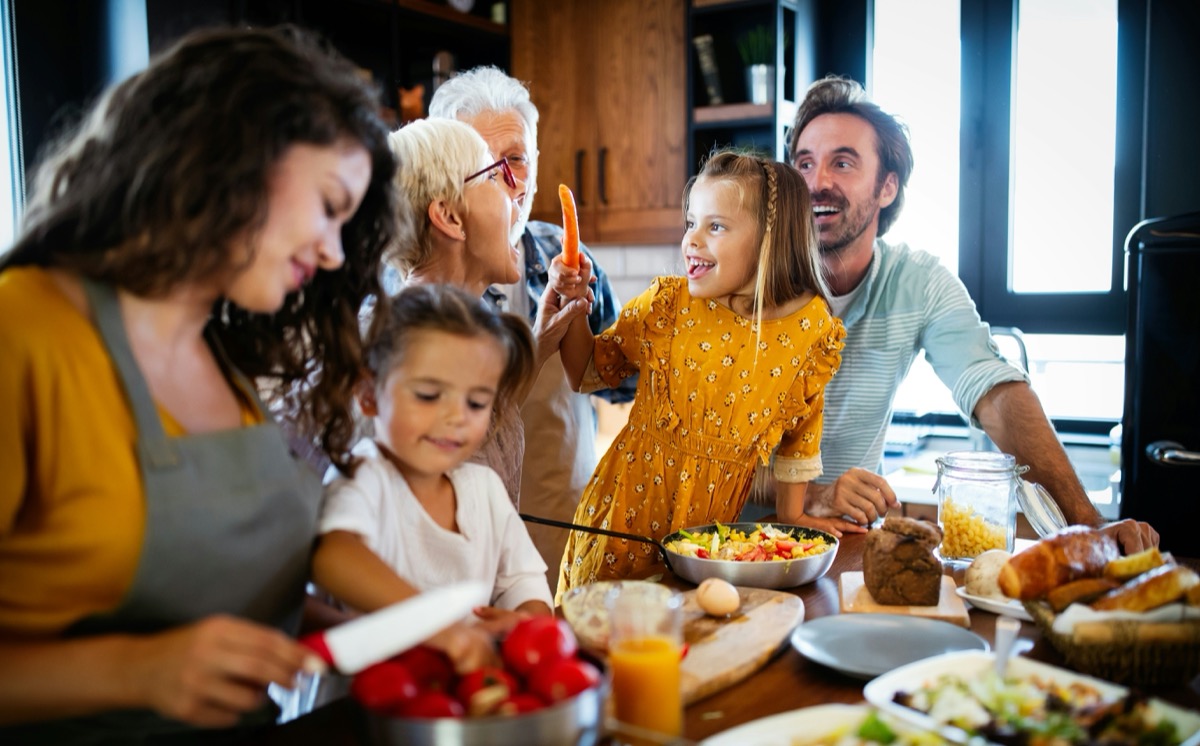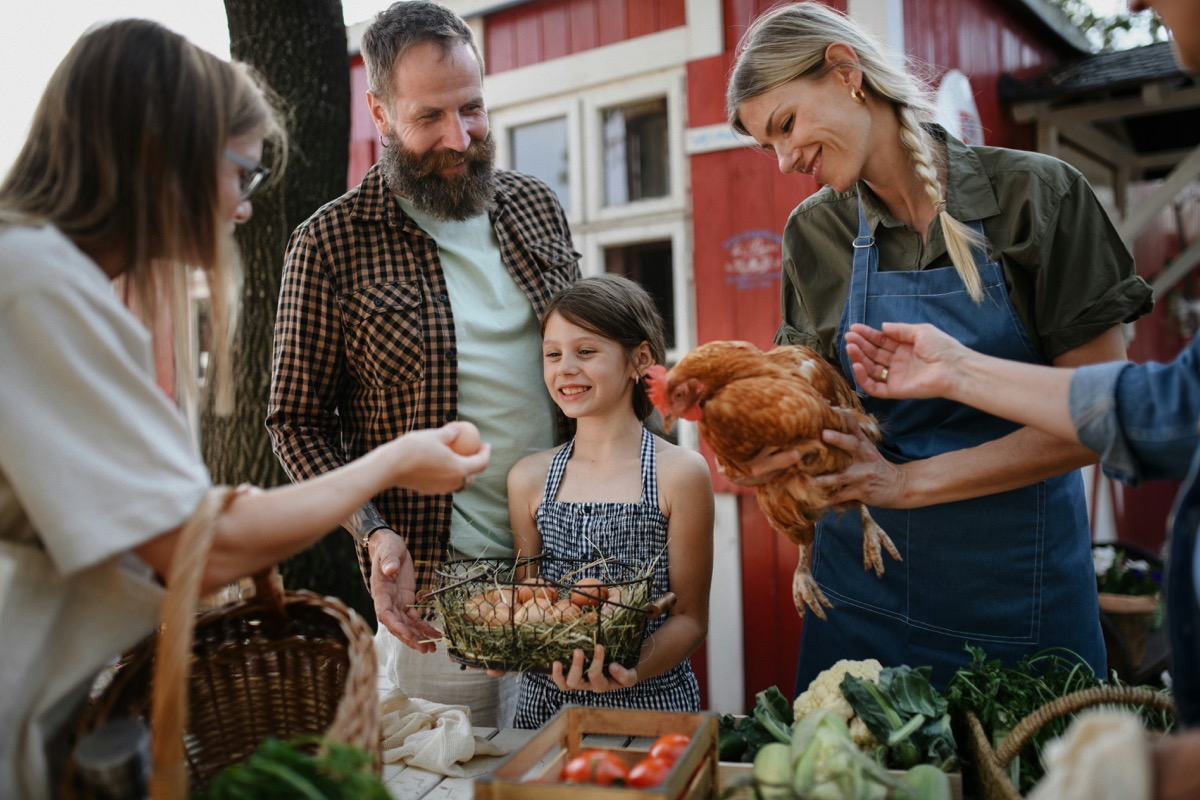Intuitive Eating for the Family:
Teaching Kids and Teens to Have a Healthy Relationship with Food

Our relationship with food becomes part of our children’s relationship with food — from toddlerhood to the teenage years. Whether they are sitting on the kitchen counter cracking eggs or grabbing snacks between high school classes, how we think about, talk about, and interact with food deeply influences how they will nourish themselves throughout life.
In my own home, I have seen how much children absorb just by being present in the kitchen, helping me to prepare food and being included in conversations about food. When my kids were very young, they participated in the kitchen - my daughter, now 15, used to beam with pride when she created colorful meals or fancy infused water with herbs from our garden. Today she makes her own meals, bakes cookies and cakes and is making connections with what foods make her feel best and fuel her school and dance performance and which ones don’t. When my son was a toddler, he used to stir pots with excitement and help chop vegetables for salads. He is now 12 and learning to make omelets and smoothies. Instead of just expecting I will make food for him when he asks, I am now teaching him how to make his own meals so he can gain confidence and independence in the kitchen! This kind of joyful engagement with food starts early and shapes their relationship with food into young adulthood.
As kids grow into tweens and teens, they begin to seek more autonomy — and with that comes a crucial opportunity to guide them toward intuitive, empowered food choices. When we support both little ones and adolescents to listen to their bodies, trust their hunger cues, explore food freely, teach them to cook and reflect on how food makes them feel — we set them up with a foundation of lifelong nourishment.
Modeling Intuitive Eating Through the Ages
Whether your child is five or fifteen, you are their primary model when it comes to food. Teens may not always seem like they’re listening, but they’re absorbing more than we realize. The way we talk about our own eating habits, body image, or food rules shapes how they view their own bodies and choices.
Consider asking yourself:
- Do I speak positively or critically about my body in front of my kids?
- Do I label food as “good” or “bad,” “clean” or “junk”?
- Do I eat with guilt or allow myself to enjoy food?
- Do I trust my teen to make their own food choices or try to micromanage their eating?
- Do I restrict or moralize food?
Our own food challenges and beliefs can often be placed upon our children, so it is important to be mindful of our own food messages.
Instead of imposing rigid rules, try inviting your teen into a conversation with curiosity:
- “How do you feel when you eat that before a game?”
- “What helps you feel energized during the school day?”
- “Are there any new recipes you’d like to try out this week?”
When we treat our kids and teens as capable individuals—and invite them into their own food decisions—we build trust and teach them to trust themselves.
Mindful Eating as a Family Practice
Mindful eating isn’t about perfection—it’s about presence. For young children, this may mean slowing down to notice a food’s color and taste. For teens, it may mean checking in with their hunger before grabbing a snack on autopilot.
Benefits of mindful family eating include:
- Better digestion and emotional regulation.
- Reduced stress and pressure around mealtimes.
- Improved body awareness and food satisfaction.
- Increased emotional connection during meals.
You don’t have to force deep conversations. A simple practice like putting phones away at the table or sharing one highlight of the day can foster a mindful connection.

Inviting All Ages into the Kitchen
Teens may be less likely to perch on the counter like toddlers, but they still benefit from being included in food decisions at home. Ask for their input when planning meals. Encourage them to choose one dinner to cook each week. Teach them life skills like reading labels or prepping their own breakfast.
This isn’t just about nutrition—it’s about building independence, confidence, and a lifelong connection to nourishment.
Try the following:
- Taking your teen to the farmer’s market and letting them pick a few ingredients to experiment with.
- Involving the whole family in building a meal plan — asking each member to contribute one dish or idea.
- Encouraging self-reflection: “What foods help you focus during exams?” or “What snacks make you feel sluggish or energized?”
Family Food Journaling: A Tool for Awareness, Not Control
Food journaling can be a powerful tool when the intention is right. For teens especially, it must never be about counting calories or controlling food. The focus should be on noticing patterns in energy, mood, digestion, and satisfaction.
This is where an app like AteMate can be so helpful. Instead of tracking numbers, it encourages reflection. Since teens are already used to taking photos, the simple act of snapping a picture of their meal fits naturally into their routine.
From there, they (and you) can use the app to reflect on:
- What foods feel good in your body?
- What meals help you stay full and focused?
- What foods do you love purely for comfort or pleasure?
For younger kids, you can adapt this by having them draw pictures or use emojis to show how a food made them feel, creating a “food rainbow” to see how many different colorful fruits and vegetables they ate.
Supporting Autonomy and Trusting the Process
As your child grows, they will experiment. They’ll eat fast food with friends, skip meals, or overeat sometimes. These moments are not failures—they are part of learning.
Your job isn’t to control every bite they take, but to be their supportive guide. Keep food language free from shame, stay curious, and keep communication open.
Let them know:
- “It’s okay to enjoy food.”
- “It’s okay to eat when you’re hungry.”
- “It’s okay to eat just because it tastes good.”
- “And it’s okay to not get it perfect all the time.”
Final Thoughts: Raising Nourished Humans
The messages we teach our kids and teens about food are just as essential as the lessons we teach about respect, resilience, and self-worth.
Let’s raise kids and teens who:
- Love food without guilt.
- Trust their bodies.
- Understand how food makes them feel.
- Know how to nourish themselves in a way that aligns with their values and well-being.
By modeling intuitive eating, fostering mindful food experiences, and including the whole family in kitchen life, we’re not just feeding their bodies — we’re feeding their relationship with food for a lifetime.
